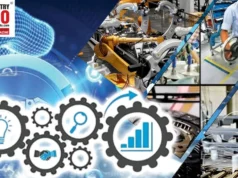“Technology as a Service”: TaaS
Abstract:
Technology as a Service “TaaS” is proprietary technology empowered by software and provided as “Services”. Unlike the traditional generation of labor-based services, the services of TaaS are highly software-enabled, on-demand, customizable to business contexts, and often virtually delivered by a system of hardware, software and people.
Unlocking Business Potential: Understanding Technology as a Service
In today’s rapidly evolving digital landscape, businesses are continually seeking innovative solutions to streamline operations, enhance productivity, and stay ahead of the competition. One such solution gaining traction is Technology as a Service (TaaS). This paradigm shift offers organizations the flexibility, scalability, and cost-effectiveness they need to thrive in the digital age. What is Technology as a Service?
What is Technology as a Service?
Technology as a Service (TaaS) refers to the delivery of technology resources, infrastructure, software, and services to businesses on a subscription or pay-per-use basis. Unlike traditional IT procurement models that require large upfront investments, TaaS enables organizations to access cutting-edge technologies without the need for significant capital expenditure.

Key Components of TaaS:
1. Infrastructure as a Service (IaaS): IaaS provides virtualized computing resources over the internet, including servers, storage, networking, and virtualization components. Businesses can scale their infrastructure up or down based on demand, paying only for the resources they consume.
2. Platform as a Service (PaaS): PaaS offers a complete development and deployment environment in the cloud, allowing businesses to build, test, and deploy applications without the need to manage underlying infrastructure. This accelerates the development process and enables greater innovation.
3. Software as a Service (SaaS): SaaS delivers software applications over the internet on a subscription basis. Users can access these applications through a web browser or API without the need for installation or maintenance. Common examples include customer relationship management (CRM), enterprise resource planning (ERP), and productivity tools.
4. Security as a Service (SECaaS): SECaaS provides security services such as antivirus, firewall, intrusion detection, and data encryption through the cloud. This approach enhances cybersecurity posture, reduces the burden on internal IT teams, and ensures continuous protection against evolving threats.
Benefits of Technology as a Service:
1. Cost-Efficiency: TaaS eliminates the need for upfront capital investments in hardware, software licenses, and infrastructure. Instead, businesses pay for services on a subscription or consumption basis, reducing IT costs and improving budget predictability.
2. Scalability and Flexibility: With TaaS, organizations can scale resources up or down based on changing business requirements. Whether expanding operations, launching new products, or accommodating seasonal fluctuations, TaaS offers the agility to adapt quickly to market dynamics.
3. Enhanced Collaboration and Productivity: Cloud-based collaboration tools and applications enable seamless communication and collaboration among geographically dispersed teams. This fosters innovation, accelerates decision-making, and improves overall productivity.
4. Focus on Core Competencies: By outsourcing technology management to trusted service providers, businesses can focus on their core competencies and strategic initiatives. This allows organizations to allocate resources more effectively and drive business growth.
5. Access to Cutting-Edge Technologies: TaaS providers continually update and upgrade their offerings to incorporate the latest advancements in technology. This ensures that businesses have access to state-of-the-art solutions without the need for costly upgrades or migrations.
 Challenges and Considerations:
Challenges and Considerations:
While Technology as a Service offers numerous benefits, organizations must address certain challenges and considerations to maximize its value:
1. Data Security and Compliance: Moving data and applications to the cloud raises concerns about data security, privacy, and regulatory compliance. Businesses must work closely with TaaS providers to implement robust security measures and ensure compliance with industry regulations.
2. Integration Complexity: Integrating TaaS solutions with existing IT systems and workflows can be complex and time-consuming. Proper planning, testing, and collaboration between internal IT teams and service providers are essential to minimize disruptions and ensure seamless integration.
3. Vendor Lock-In: Depending heavily on a single TaaS provider may result in vendor lock-in, limiting flexibility and hindering innovation. Businesses should evaluate multiple providers, negotiate favourable terms, and maintain exit strategies to mitigate the risks associated with vendor lock-in.
4. Performance and Reliability: Reliance on internet connectivity and cloud infrastructure introduces risks related to performance degradation and downtime. Businesses should assess service level agreements (SLAs) offered by TaaS providers and implement redundancy and disaster recovery measures to mitigate these risks.
Conclusion:
In an era defined by digital transformation and rapid technological innovation, Technology as a Service emerges as a game-changer for businesses seeking agility, scalability, and cost-efficiency. By embracing TaaS, organizations can unlock new opportunities, drive innovation, and position themselves for sustained success in the digital age. However, careful planning, robust security measures, and strategic partnerships are essential to realizing the full potential of TaaS and navigating its challenges effectively.
About the Author:

Ms. Lopamudra Das
Senior Sales Engineer
Veritas Technologies LLC
Ms. Lopamudra Das is Bestowed with the following Licences & Certifications :
https://www.linkedin.com/in/lo
Ms.Lopamudra Das can be Contacted at:









